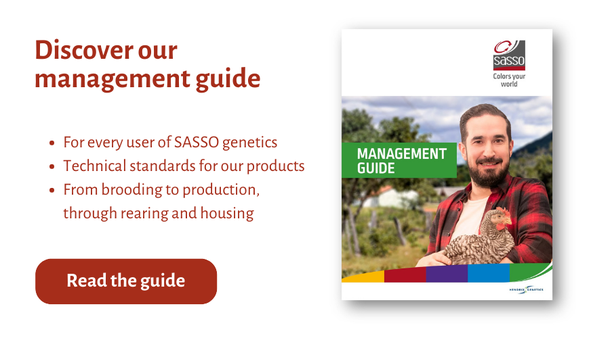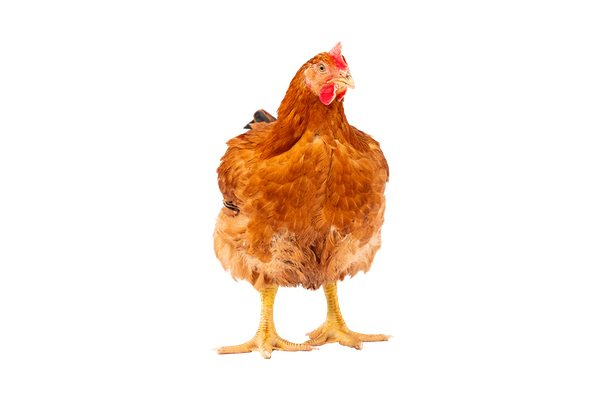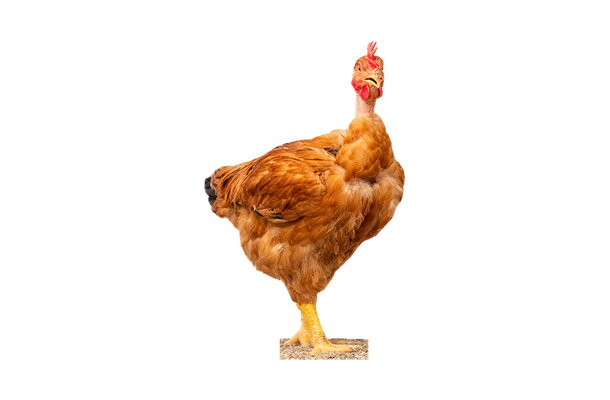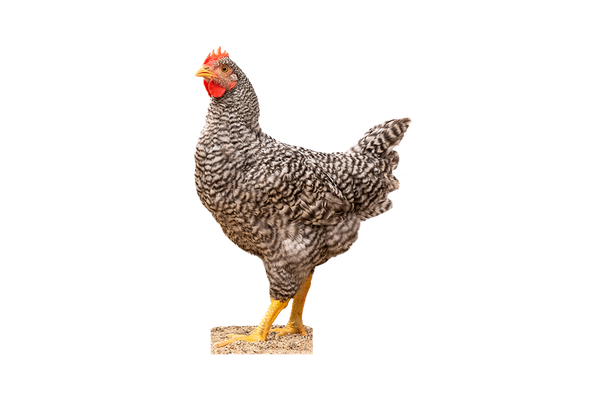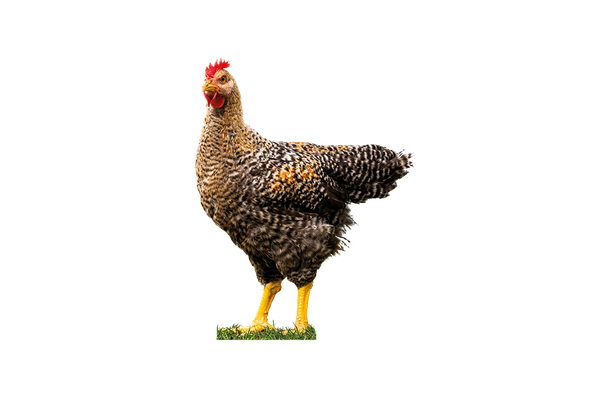Marble X (MBX)
The Marble X features unique black and white feathering, heavy body weight, and robust adaptability. Based on feedback from our customers, the Marble X was specifically tailored to meet the needs of the market.
Starting with its visual appeal, this white and black spotted bird is highly desirable in the market. Additionally, the Marble X is a heavier bird that delivers optimal meat yield. Slow growing and rustic, this product is easy to manage, even in challenging environments.
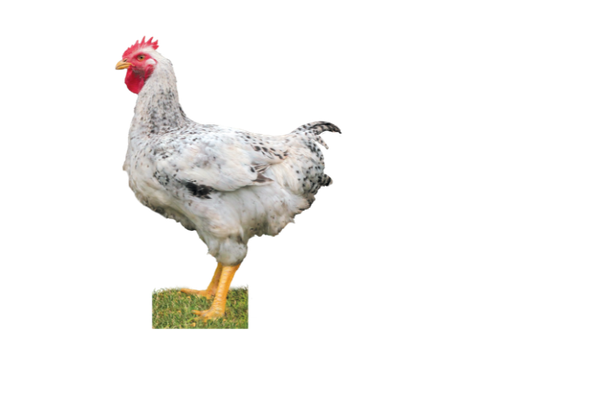
Unique benefits
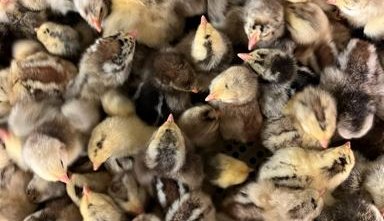
Unique feathering
High-quality, black and white feathering make this bird stand out
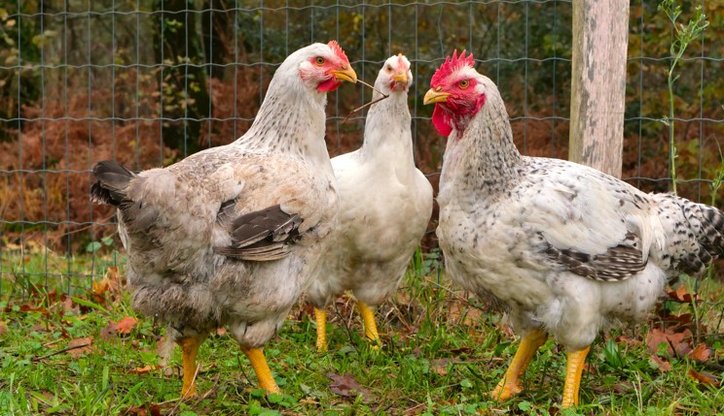
Robust adaptability
The Marble X is able to thrive in various or challenging environments
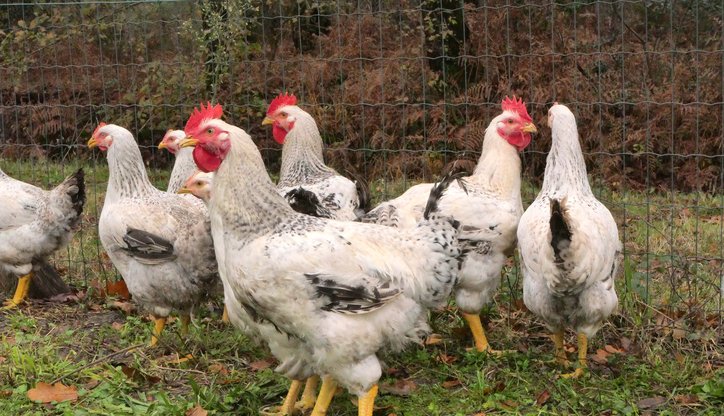
High meat yield
This heavier bird delivers consistent daily growth and optimal meat yield
Marble X & SA51A Cross
| Age in days | Weight* | FCR | Male weight* | Female weight* |
|---|---|---|---|---|
| 1 | 38 | 38 | 38 | |
| 7 | 66 | 0.70 | 65 | 66 |
| 14 | 191 | 1.27 | 194 | 187 |
| 21 | 510 | 1.69 | 520 | 500 |
| 28 | 693 | 1.95 | 717 | 668 |
| 35 | 1080 | 2.13 | 1141 | 1018 |
| 42 | 1296 | 2.24 | 1382 | 1211 |
| 49 | 1620 | 2.28 | 1741 | 1499 |
| 56 | 2051 | 2.32 | 2221 | 1881 |
| 63 | 2276 | 2.36 | 2471 | 2080 |
| 70 | 2594 | 2.42 | 2823 | 2366 |
| 77 | 2899 | 2.52 | 3156 | 2643 |
| 84 | 3185 | 2.66 | 3464 | 2907 |
| 91 | 3450 | 2.88 | 3744 | 3156 |
Marble X & SA31A Cross
| Age in days | Weight* | FCR | Male weight* | Female weight* |
|---|---|---|---|---|
| 1 | 38 | 38 | 38 | |
| 7 | 74 | 0.68 | 74 | 74 |
| 14 | 211 | 1.24 | 214 | 207 |
| 21 | 547 | 1.65 | 558 | 536 |
| 28 | 751 | 1.91 | 778 | 724 |
| 35 | 1162 | 2.08 | 1229 | 1095 |
| 42 | 1407 | 2.19 | 1501 | 1313 |
| 49 | 1760 | 2.23 | 1894 | 1627 |
| 56 | 2219 | 2.26 | 2406 | 2033 |
| 63 | 2471 | 2.30 | 2686 | 2256 |
| 70 | 2814 | 2.36 | 3067 | 2562 |
| 77 | 3141 | 2.46 | 3427 | 2856 |
| 84 | 3448 | 2.60 | 3761 | 3136 |
| 91 | 3733 | 2.81 | 4067 | 3399 |
These recommendations, based on our experience, are intended to allow the expression of our strains’ genetic potential in normal operations without any responsibility on the part of SASSO. An environment, biosecurity conditions, the geographical location, or specific equipment might require adaptations that have not been taken in consideration in these general recommendations.

